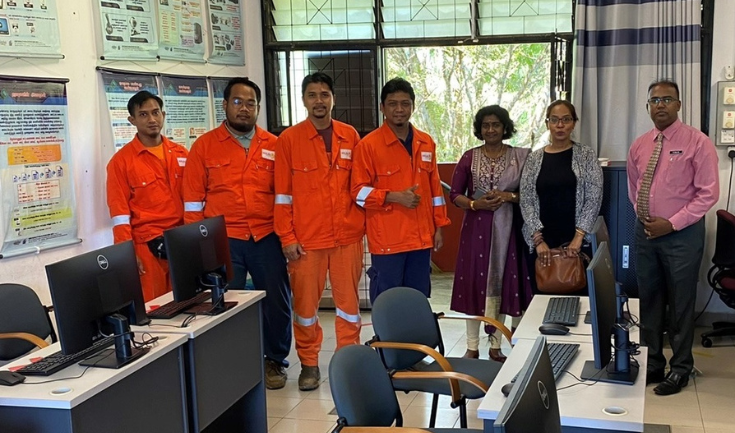
Solarpack donates computers to SJKT Palanisamy Kumaran school
By Harmon
With the aim of transforming the lives of students and facilitating their access to new technologies
Solarpack has donated 12 computers for the computer lab at SJKT Palanisamy Kumaran School, located in Sungai Petani, northwest Malaysia, 4 km away from Solarpack's 3SP plant. The main aim of this action is to improve the quality of education for children in the region and to help them overcome the digital divide through access to new technologies.
The school, formerly known as Bahagian Sungai National Tamil Primary School, was founded in 1946 and serves the local community and families around palm oil and rubber plantations near Bukit Selambau. By providing the computer equipment, teachers and students at this school are able to have computer classes and new online learning experiences, essential for the future of these students.
The delivery and installation of the computers took place on November 29th, where members of Solarpack's team in the region and the school's management met with a technician to supervise the installation, as well as attending a chat between the faculty members and the technician on registering the software and emails for the computers.
Solarpack's team consisted of Mohd Shafri bin Ramli, Solarpack Malaysia 3SP plant manager, Muhamad Tarmizi bin Saad supervisor, Muhammad Aiman bin Ariff and Mohamad Fazwan bin Rohalim, technicians and Faraheda Ariff Business Development Associates. The handover and meeting took place with the school principal, Mrs. Rajemah and the deputy principal, Mr. Kogilan.
This new initiative, whose origin is the call that Solarpack launched among its employees to present social initiatives of interest to them, is fully aligned with the company's Social Action Plan, which seeks to support socio-economic development through education in the areas where the company operates. The main aim of this action is to transform the lives of students and help them to reduce the digital divide. This is possible thanks to internet access and direct contact with the current tools available to children in other countries.

